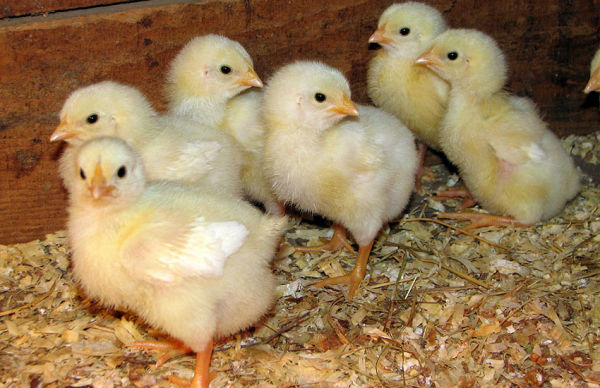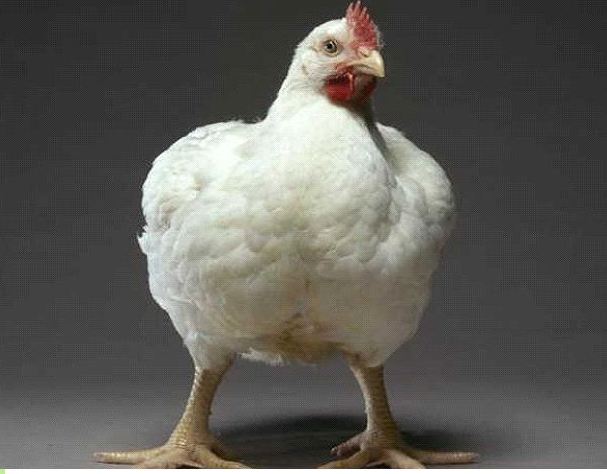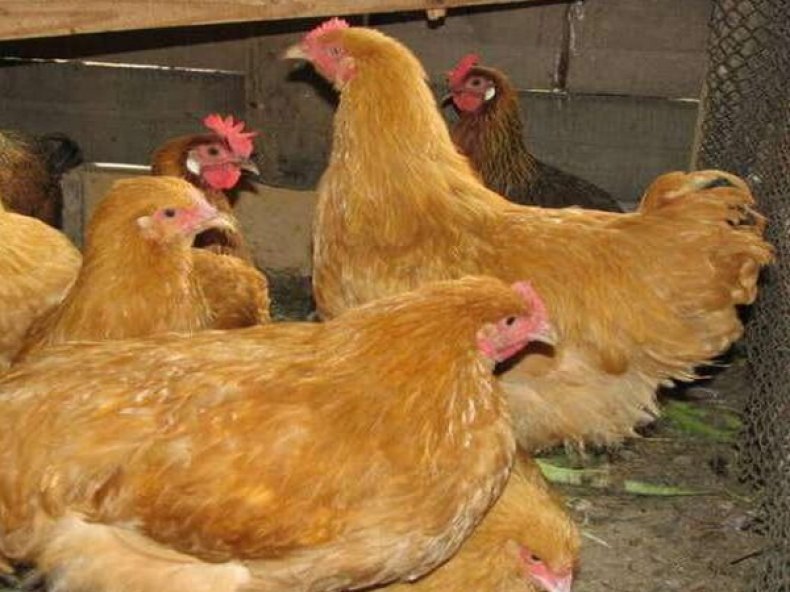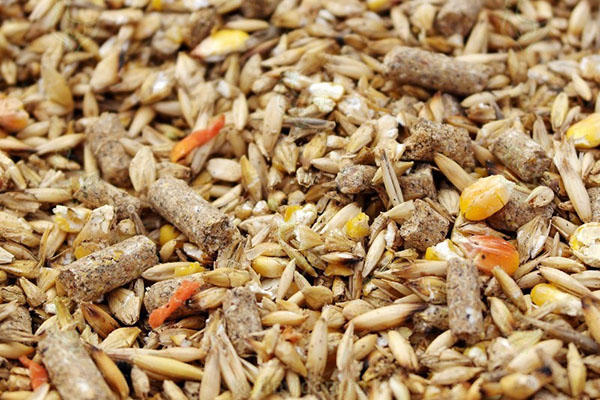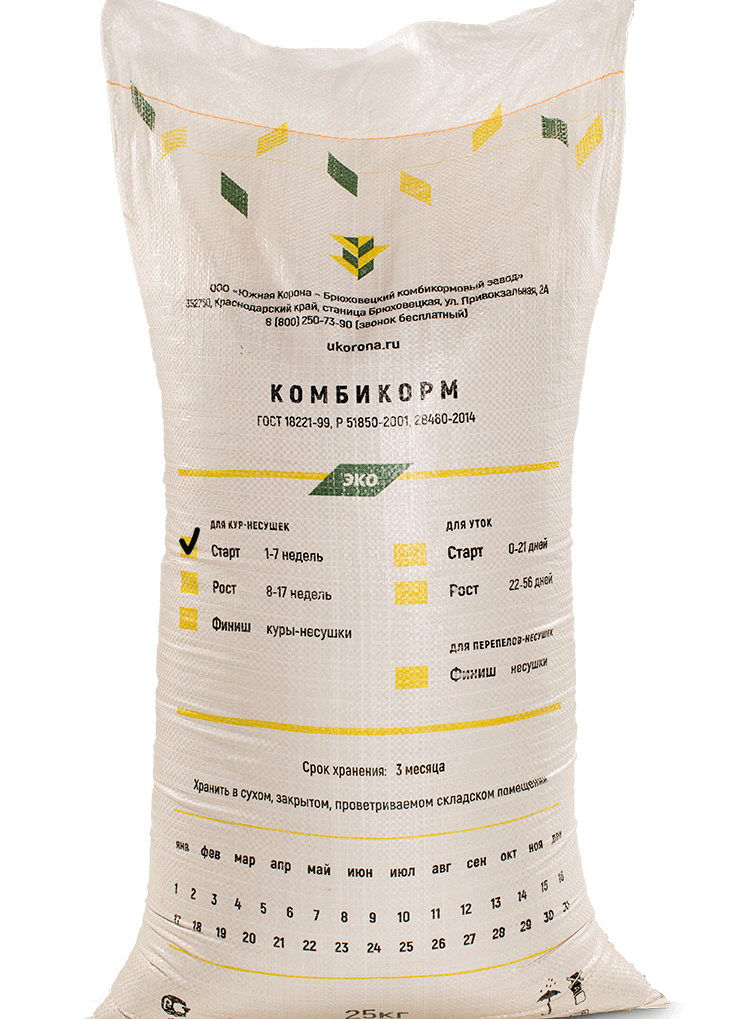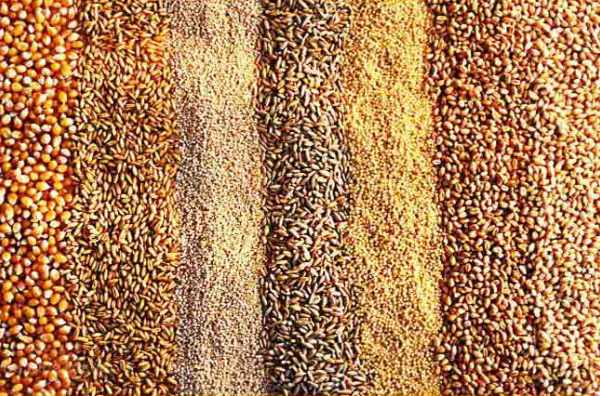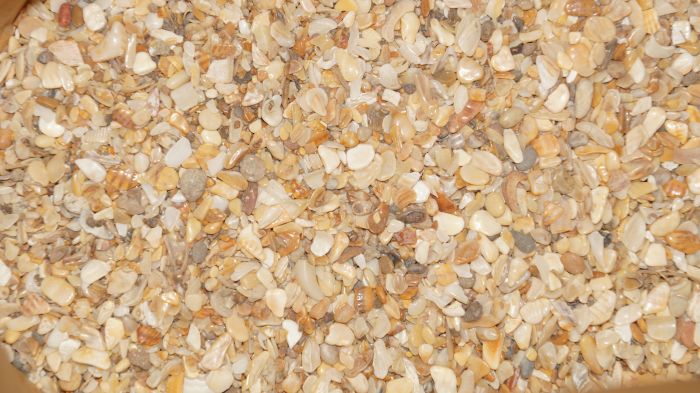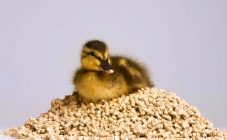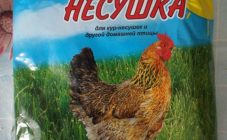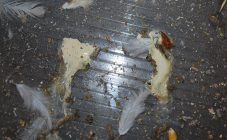Content:
Recently, the growing of meat breeds of chickens at home has become more and more popular. In this regard, many questions arise related to the process of feeding birds. One of the most exciting questions is how to feed 2 month old broilers. You can get an answer to this question only by having a good understanding of the peculiarities of keeping and feeding this type of chickens.
General information about broilers
Contrary to popular belief, broilers are not a full-fledged breed of birds (the breed implies breeding with the inheritance of basic characteristics). Basically, they are called crosses - a piece-bred variety of birds. Every year, new types of broilers with improved performance indicators are introduced. How many breeds already exist is difficult to calculate.
In order to obtain high-quality meat products, households raise two classes of broilers: white meat breeds and colored meat breeds.
Characteristics of broiler meat breeds:
- Large body, wide chest, strong legs, white plumage.
- Very fast and effective weight gain. At the age of 3 months, the cock reaches 5.5 kg, the hen - up to 5 kg of weight.
- Low egg production.
- Calm character.
- Demanding food and living conditions.
The most famous broiler crosses:
- COBB-500. They are characterized by effective and fast weight gain. Main criteria: excellent meat quality, yellowish color of the carcass, rather fatty meat, omnivorous, good viability, high profitability.
- ROSS-308. Famous English cross. A distinctive feature is a short feeding period. Chickens are ready for slaughter at the age of 3-6 weeks. They are valued for very effective muscle mass gain - more than 50 g per day. Birds are undersized, compact, not very large, rush well. Unlike other broilers, this cross is capable of producing quality offspring.
- ROSS-708. New breed, improved broiler look. Combined the effectiveness of the weight gain of the breed 308 and a large physique, unpretentious maintenance from the COBB-500. The most popular breed for small farms.
- Change. The result of the work of domestic selection. The main characteristics are considered to be good performance in body weight gain, excellent adaptability to the required conditions, almost one hundred percent survival rate of chickens, tasty fatty meat.
The second option for the household colored broilers is meat-and-meat crosses. Compared to beef breeds, they do not grow so large and do not recover as quickly. The positive characteristics of this broiler line are high egg production, good weight gain. Unlike white broilers, colored ones do not need special care and nutrition, they can produce viable offspring.
Most popular breeds:
- Redbrough. English breed. Red-brown plumage.They gain weight up to 4.5 kg. They are kept like regular domestic chickens. Egg production is reached at 5 months of age.
- Hungarian giant. It is imported to Russia from Hungary. Adapts to any conditions of keeping, but demanding on the quality of feed. At 6 months of age, they reach a weight of 6 kg.
- Foxy chick. Bright fiery red breed. Differs in large egg sizes, roosters can reach 7 kg in six months. An important nuance - the birds are noisy, do not get along well with other breeds.
How to feed broilers at 2 months
To achieve the most productive result, you should understand well how to feed 2 month old broilers. There are several feeding models:
- Ready mixed feed with the addition of special additives.
- Complete feed, prepared independently.
- Economical feed.
Economical feed options
How to feed broilers at 2 months at home? Compound feed mixtures are quite expensive and significantly affect the profitability of broiler growing. Experienced poultry farmers are trying to replace a significant part of purchased feed with affordable and cheap products.
With such fattening, a week-old chicken is fed with starting compound feed and gradually switches to a natural, varied diet.
In the future, the poultry farmer decides for himself how to feed two-month-old broilers at home.
Meat and fish waste is used as an essential protein. In broths from these products, cereals from corn, barley, wheat and other grain mixtures are steamed. Sprouted grain and peas have proven themselves well. Chickens eat well and gain weight on mash of grated pumpkin, Jerusalem artichoke, beetroot, boiled potatoes, steamed nettle. Meadow grass, beet tops, peas, cabbage are used as juicy forages.
This approach to growing poultry is quite laborious and somewhat extended in time (broilers gain optimal weight in about 4 months). The advantage of this method is the low cost of feeding. The second advantage is the good, natural taste of the meat. It comes out quite fat, soft and elastic.
Broiler recipes 1-14 days
The first stage is the pre-start, which is very important in the whole process of growing poultry. In the first week, chicks are most vulnerable to a variety of diseases. In order not to lose the brood, it is recommended to feed the chickens with a ready-made prelaunch set BR-1 during this period. The second week is safer, you can feed it with a boiled egg, low-fat cottage cheese.
Feeding is carried out approximately once every 2-3 hours. The remaining food is discarded. As a drink, you can use a weak solution of potassium permanganate.
Diet from 14 to 30 days
The second stage is the start. This is a period of intensive growth of chickens. The PK-5 starter kit can be used as a ready-made feed. It has proven itself well as a balanced feed. Eating with this set, not only a chicken, but also a turkey and a duckling gains weight perfectly.
When preparing feed mixtures yourself, you need to adhere to certain proportions:
- about 50% - ground corn.
- 20% - sunflower cake.
- 10-13% - ground wheat.
- 5-7% - fish or bone meal.
- 5% yeast.
- 3-5% - grass flour (alfalfa).
Feeding with cottage cheese, whey does not stop, crushed eggshells are added. Succulent food (dandelion, nettle, alfalfa), mash with grated pumpkin, carrots are gradually introduced. For prevention, potassium permanganate is added to the drink.
From day 14, vitamin B and Bayokox are added to the drink. Biovit-80 is additionally introduced.
Finish feeding 30 to 45 days
The third stage of feeding is the final one.During this period, chickens are gaining the bulk, so it is very important to decide how to feed two-month-old broilers.
Of the ready-made mixtures, BR-3 and PK-6 received positive reviews.
The composition of the compound feed differs in the ratio of the components, the basis is almost the same:
- 40-45% - corn.
- 15-17% - cake.
- 17-20% - bone or fish meal.
- 10-15% - wheat.
- 3-5% yeast.
- 1% - chalk.
- 1% - herbal flour.
The problem of how to feed broilers at 2 months is no longer as acute as in the first periods. Other crops can be added to the diet - barley, soybeans, peas. In addition, they do not need to be crushed. A lot of greens, seasonal vegetables are added. We must not forget about chalk and shells.
Major feeding mistakes
There are cases when the desired productivity cannot be obtained when growing broilers.
Several factors may affect this result:
- Broiler diseases. The chickens of these crosses are vulnerable to a variety of diseases. Timely prevention can save most of the livestock.
- Lack of vitamin supplements. Can lead to rickets and death.
- Sodium deficiency. Leads to decreased appetite. Can be corrected by adding table salt to food.
- Lack of amino acids.
- The grain is ground too fine. It is inconvenient for birds to peck food, it crumbles to a greater extent.
- Incorrect feed consistency. Sticky and viscous foods (boiled potatoes, bread) can lead to digestive problems. Mix them with grain flour.
- Freshness of feed. Broilers need to be fed quite often. Better to give smaller portions, but fresh. Leftover feed should be removed. This rule also applies to water.
- Conditions of detention. Broilers should be kept in cages or small fences. On open walks, they move a lot, eat less and do not gain the required mass.
- Low temperature. The shoes are very sensitive to lack of heat. At low temperatures, they get sick, stop growing. It is not recommended to grow broilers in winter for households - often the owners cannot provide optimal conditions for productive growing of poultry.
- Inappropriate temperature conditions. This applies to small chickens. Overheating, like hypothermia, has a bad effect on the development of chickens.
- Lack of lighting. Broilers need constant dim light.
Breeding and raising broiler chickens is quite a profitable and productive business. Provided the correct approach and a detailed study of some of the nuances of feeding and keeping this bird, it is possible to get dietary and tasty meat, which you can be sure of.
